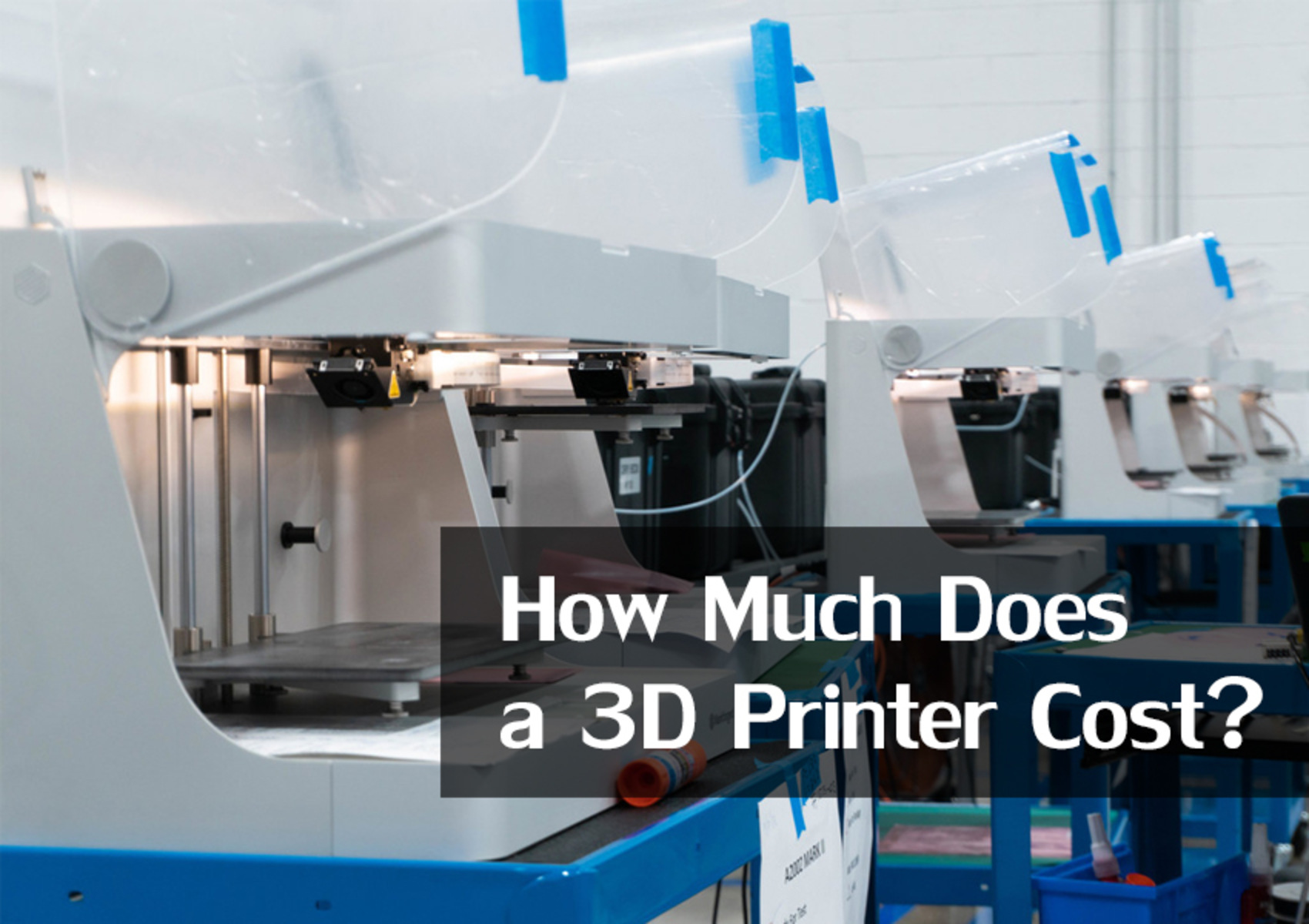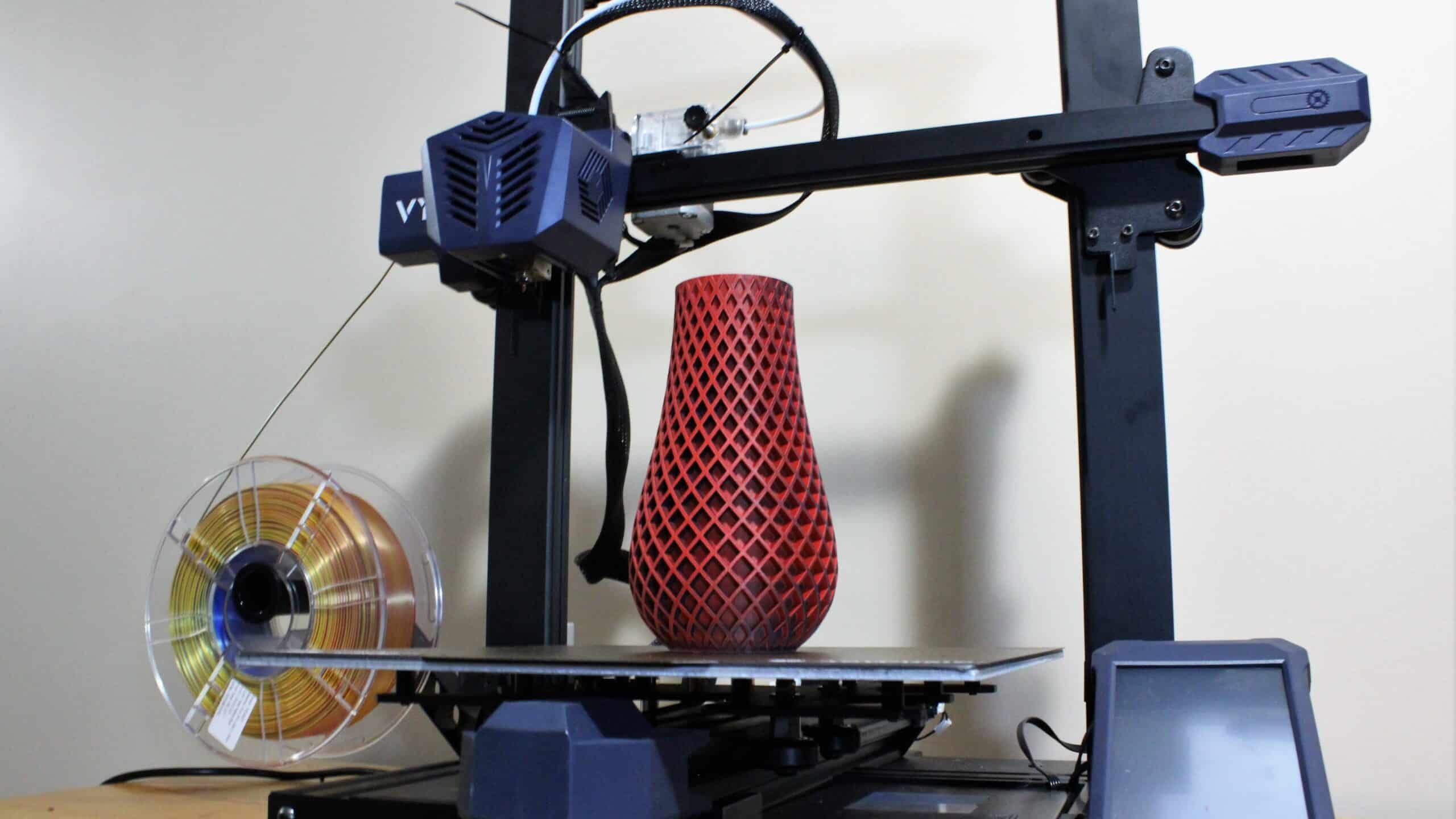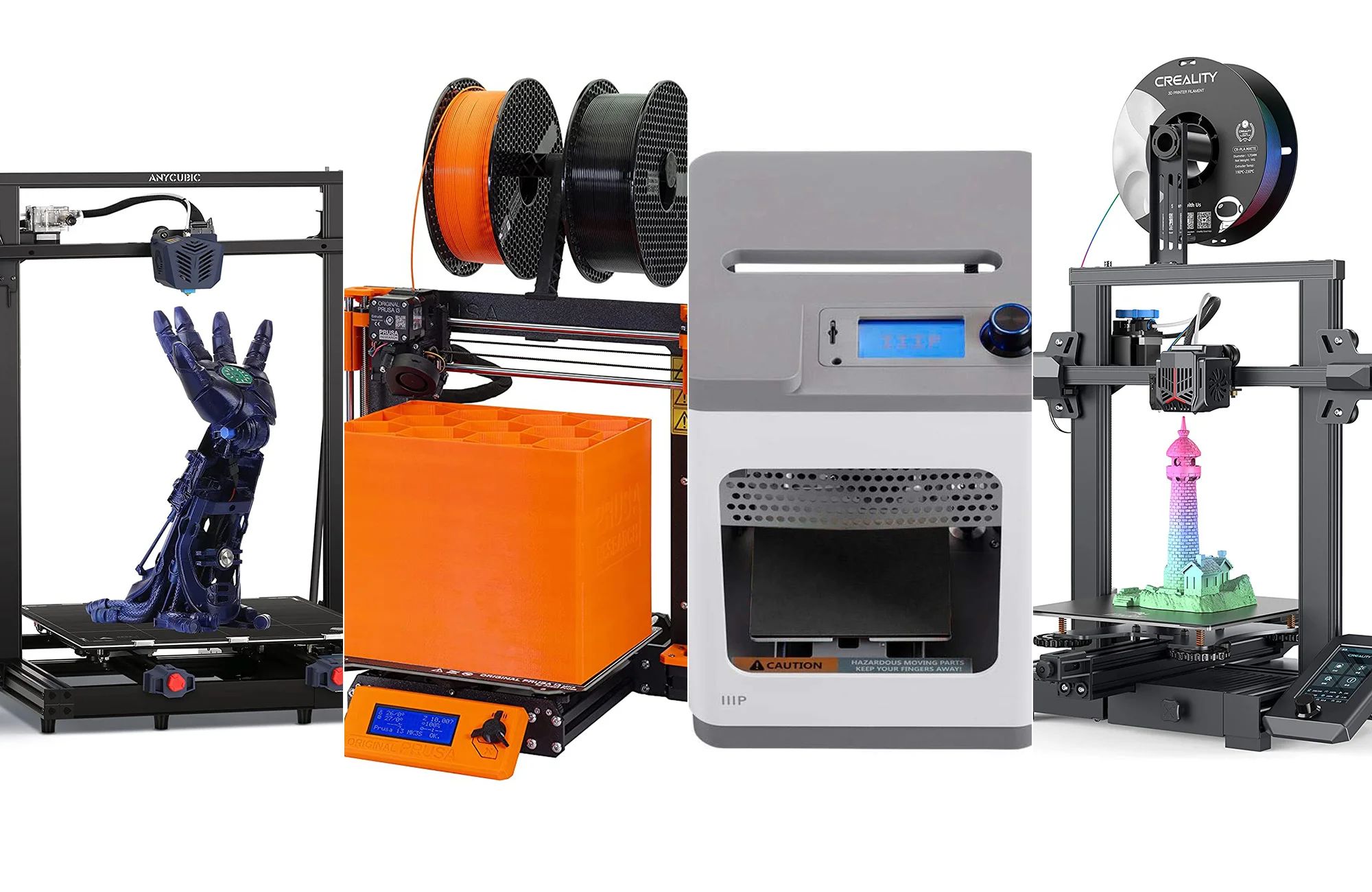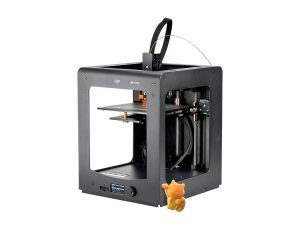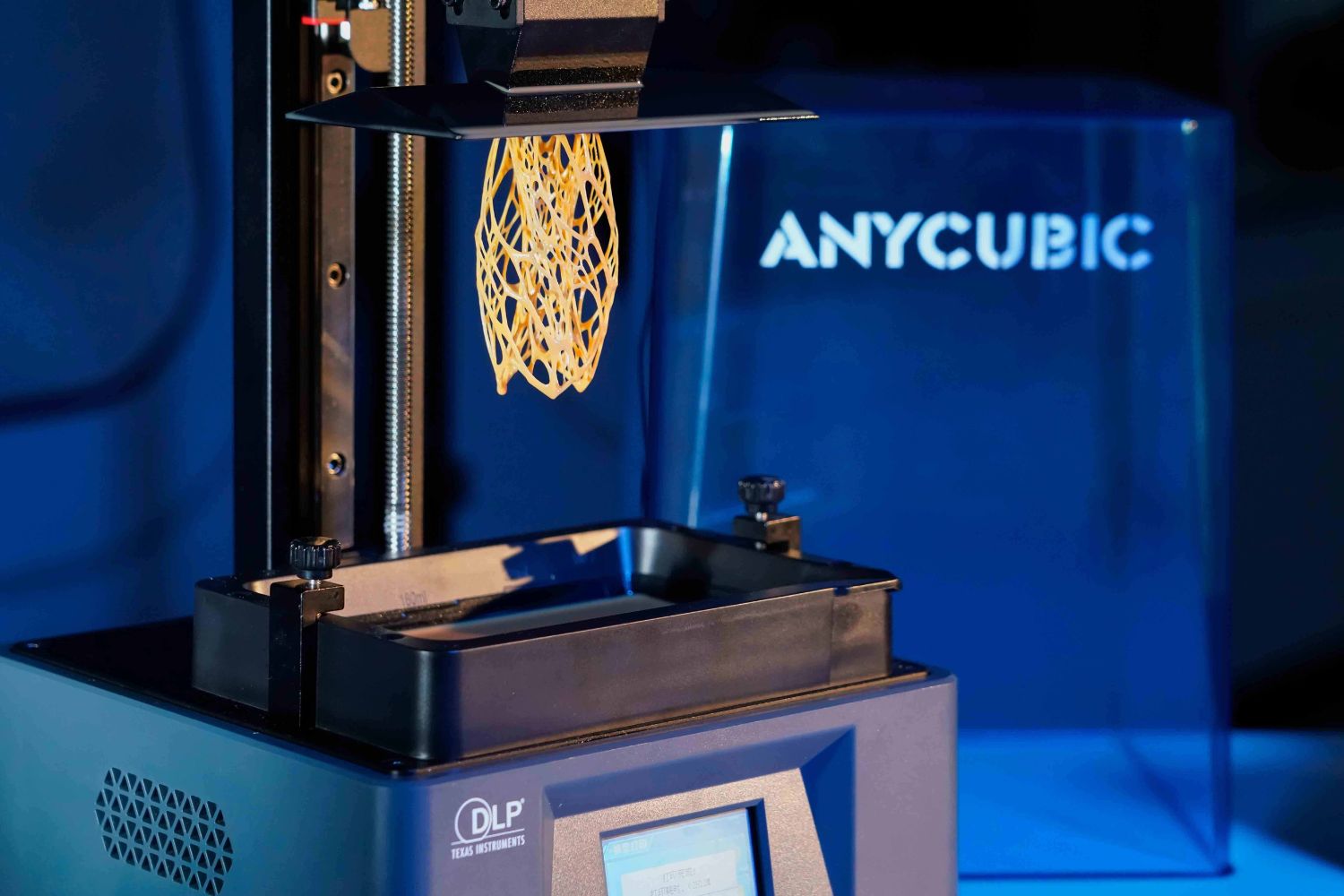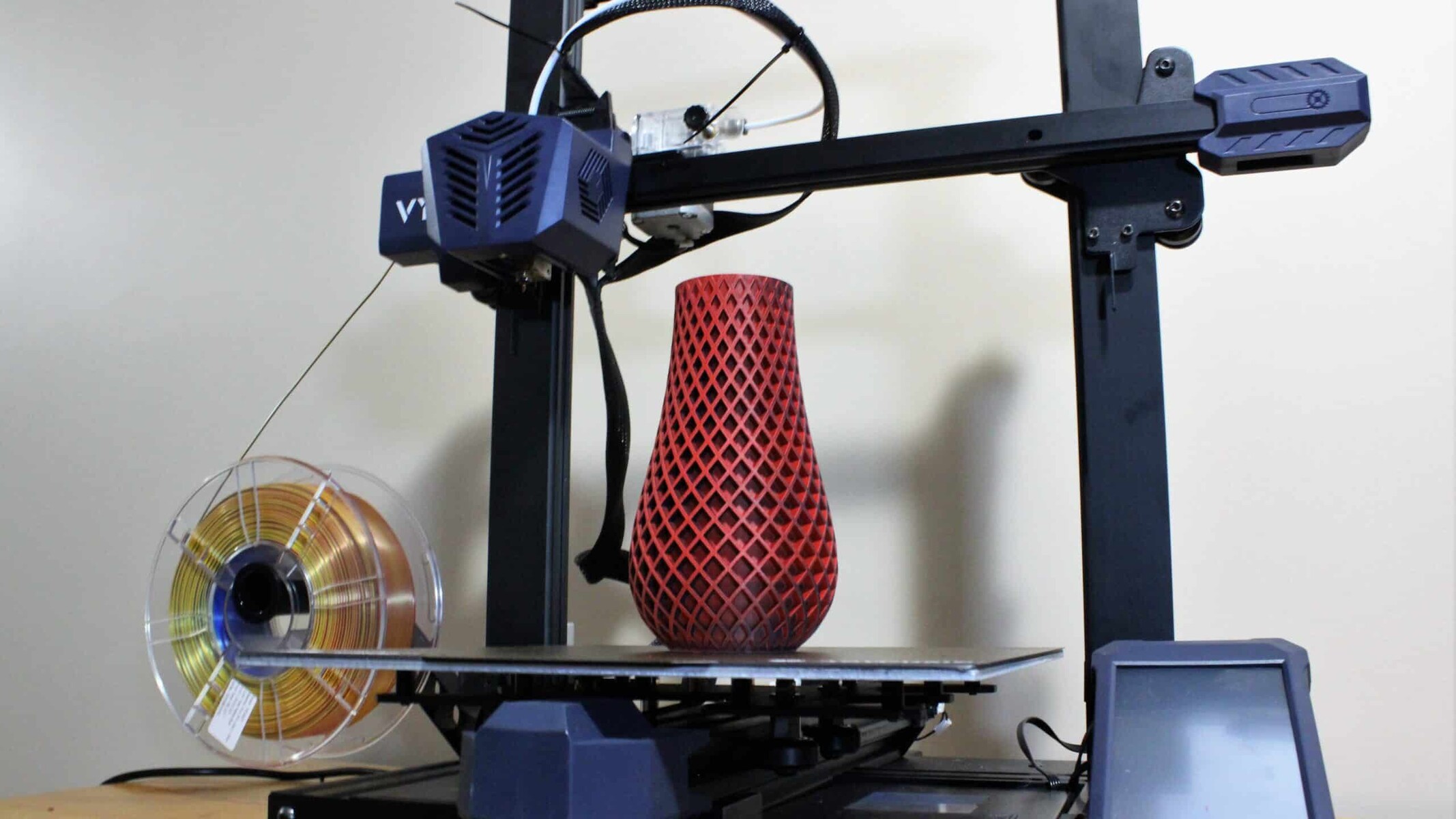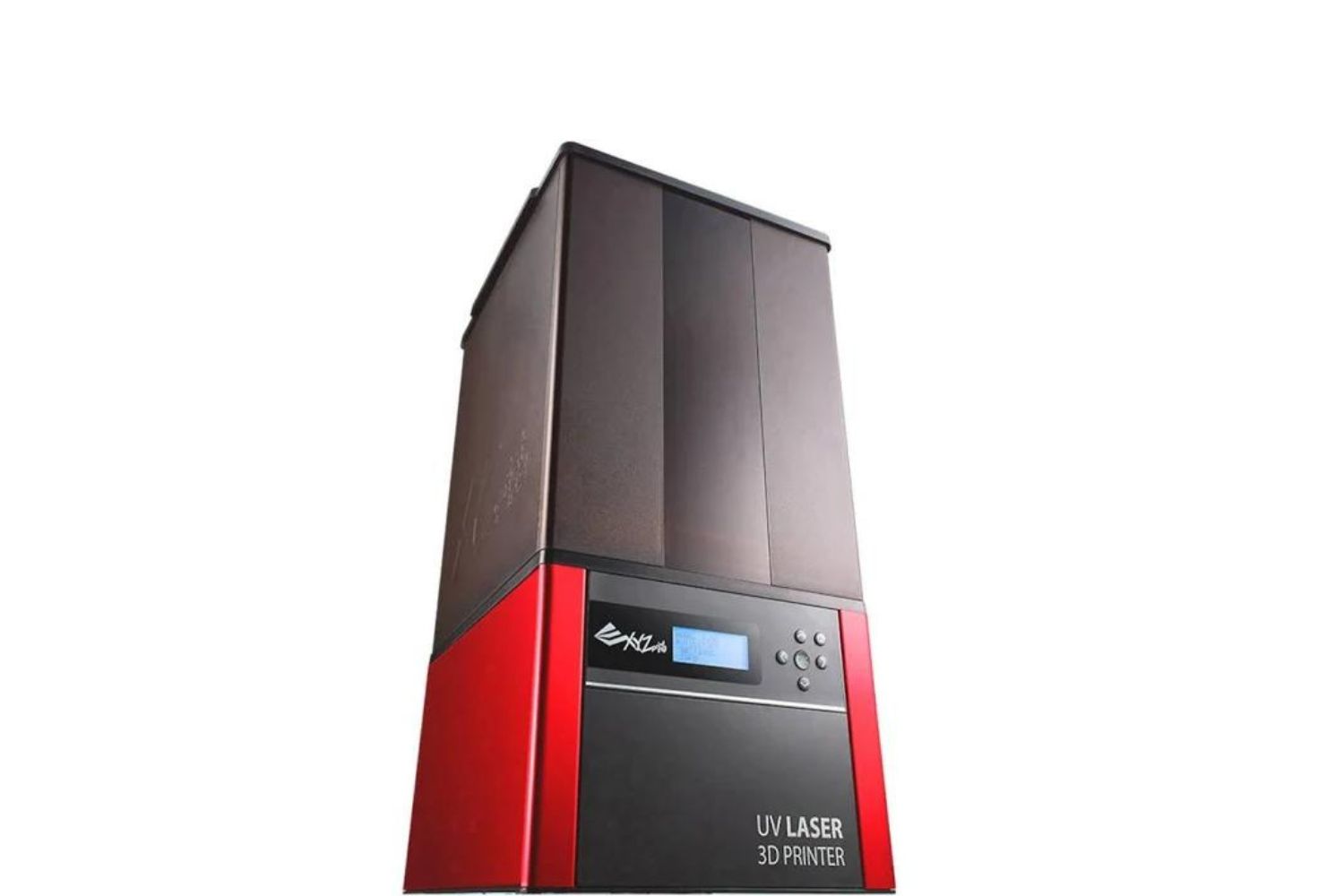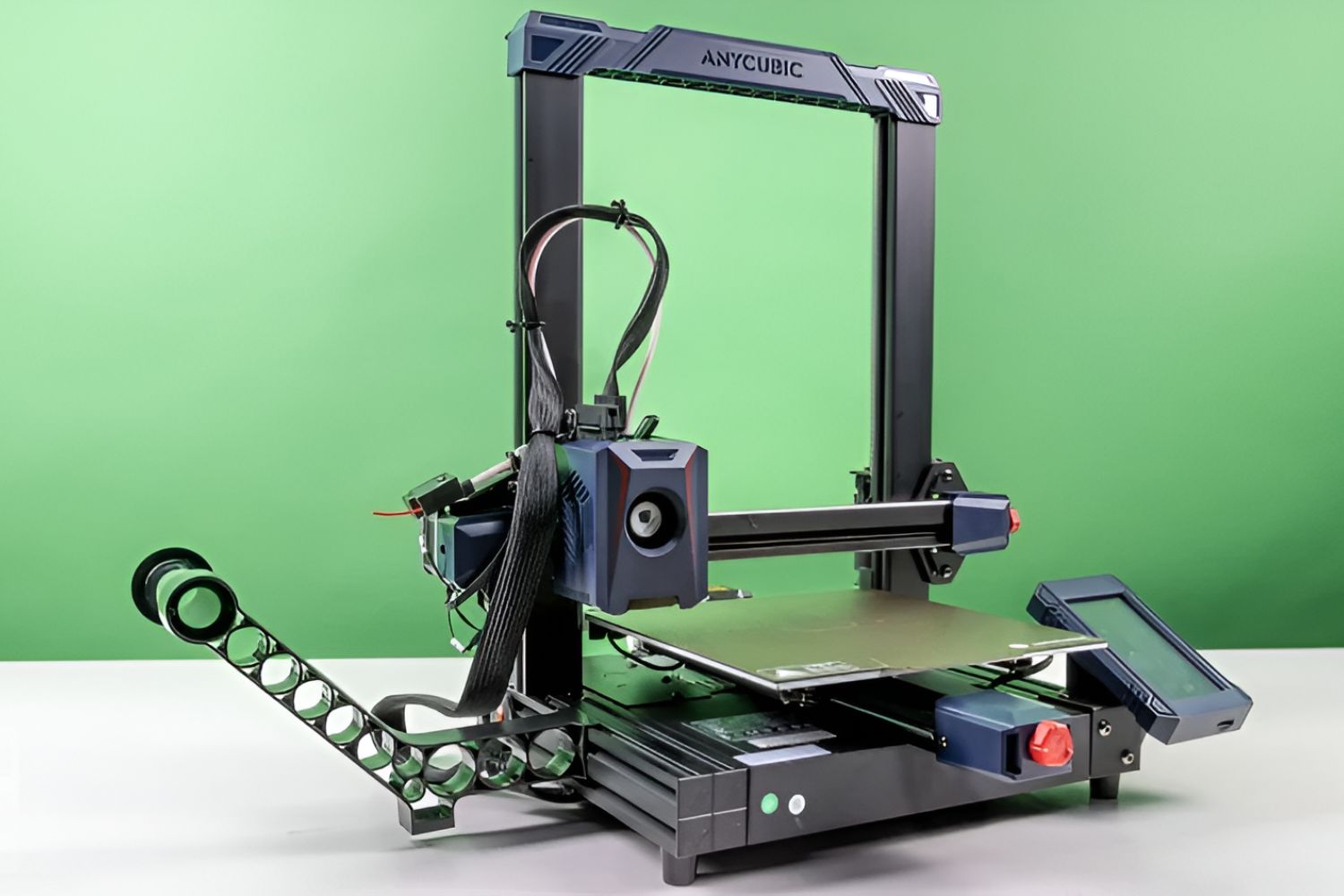Introduction
Welcome to the world of 3D printing, where imagination takes shape! In recent years, 3D printing has gained incredible popularity and has revolutionized manufacturing processes across various industries. From creating intricate prototypes to manufacturing complex products, 3D printing offers endless possibilities.
However, one important factor that often comes into play when considering 3D printing is the cost involved. Understanding the cost factors and how they impact the overall budget is crucial for anyone venturing into the world of 3D printing.
In order to comprehend the cost implications, it is essential to dive deeper into the factors that influence 3D printing costs. The type of 3D printing technology used, the materials employed, labor costs, machine expenses, and additional charges all contribute to the final price tag. By exploring these elements, you can gain a clearer understanding of the cost breakdown and make informed decisions.
In this article, we will explore the various factors that influence the cost of 3D printing. We will also delve into the different types of 3D printing technologies available and break down the individual cost components. Additionally, we will provide some cost-saving tips to help you optimize your 3D printing budget.
Whether you are an entrepreneur looking to bring a unique product to market or a hobbyist interested in exploring the world of 3D printing, understanding the costs involved is crucial. So, buckle up and let’s embark on a journey to discover how much 3D printing truly costs!
Factors that Influence 3D Printing Costs
Several factors come into play when determining the cost of 3D printing. It is essential to consider these factors as they directly impact the final price of a printed object. Let’s explore some of the key elements that influence 3D printing costs:
- Size and Complexity of the Object: The size and complexity of the object being printed are significant factors in determining the cost. Larger objects require more material and longer print times, resulting in higher costs. Additionally, complex designs with intricate details may require more labor and effort, contributing to increased expenses.
- Type of Material: The material used in 3D printing plays a crucial role in determining the cost. Different materials have varying price points, with some being more affordable than others. For example, basic plastics such as PLA (Polylactic Acid) are generally less expensive compared to high-performance materials like metal powders or carbon fiber composites.
- Quantity and Batch Printing: The quantity of objects being printed and whether they are printed individually or in batches affects the cost. When printing multiple objects at once, economies of scale come into play, reducing the overall cost per unit. However, it is essential to consider the limitations of the 3D printer’s build volume and the additional setup time required for batch printing.
- Printing Speed: The speed at which the 3D printer operates can impact the cost. Faster printing speeds may result in higher costs due to the wear and tear of the printer and the need for more reliable and sophisticated equipment. Slower print speeds, on the other hand, can reduce costs but may result in longer overall production times.
- Post-Processing Requirements: Depending on the desired finish and functionality of the printed object, post-processing may be necessary. This includes sanding, polishing, painting, or any other finishing techniques. Keep in mind that post-processing adds additional labor and time, resulting in increased costs.
- Quality and Resolution: The desired quality and resolution of the printed object can impact the cost. Higher-quality prints require more precise and advanced printers, which may come at a higher price point. Additionally, using finer layers or smaller nozzle sizes can increase the production time, leading to higher labor costs.
By considering these factors, you can better understand how they influence the overall cost of 3D printing. It is crucial to analyze each factor based on your specific requirements and budget constraints to make informed decisions. Now that we have explored the key factors, let’s move on to understanding the different types of 3D printing technologies!
Types of 3D Printing Technologies
There are several different types of 3D printing technologies available, each with its own unique processes and characteristics. Understanding these technologies is crucial when considering the cost implications. Let’s explore some of the most common types of 3D printing technologies:
- Fused Deposition Modeling (FDM): FDM is one of the most widely used 3D printing technologies. It works by extruding melted thermoplastic material through a nozzle, which then solidifies layer by layer to create the object. FDM printers are generally more affordable compared to other technologies, making them a popular choice for hobbyists and small businesses.
- Stereolithography (SLA): SLA utilizes a liquid resin that is cured using ultraviolet light to create the final object. The build platform is submerged in the liquid resin, and a laser or projector selectively cures the resin layer by layer, creating highly detailed and accurate prints. SLA printers are ideal for creating intricate and visually appealing prototypes but may come at a higher cost compared to FDM printers.
- Selective Laser Sintering (SLS): SLS works by using a high-powered laser to selectively fuse powdered materials, such as plastics, metals, or ceramics, into solid layers. It offers excellent versatility and can work with a wide range of materials. SLS is often used for complex and functional prototypes, but it tends to be more expensive due to the higher cost of the equipment and materials.
- PolyJet: PolyJet printers make use of inkjet technology to jet and cure liquid photopolymers layer by layer. This technology enables the production of highly detailed, multi-colored, and multi-material prints, making it suitable for applications like architectural models and product prototypes. PolyJet technology can be more costly due to the complex printing process and the need for specialized materials.
- Digital Light Processing (DLP): DLP works similarly to SLA, where liquid resin is cured layer by layer using a light source, but instead of using a laser, it utilizes a digital micromirror array to selectively project light. DLP offers high-speed printing and exceptional resolution, making it suitable for applications that require intricate details. However, DLP printers can be more expensive compared to other technologies.
Each of these technologies has its own advantages and cost implications. Factors such as material requirements, print volume, speed, and complexity can vary depending on the chosen printing technology. Consider your project’s specific requirements and budget constraints when selecting the most suitable technology for your needs.
Now that we have explored the different types of 3D printing technologies, let’s move on to understanding the cost breakdown of 3D printing.
Cost Breakdown of 3D Printing
When it comes to 3D printing, understanding the cost breakdown is essential. By analyzing the individual cost components, you can gain a clearer picture of where the expenses lie. Let’s dive into the key cost factors involved in 3D printing:
- Material Costs: The cost of materials is a significant component in 3D printing. Different materials have varying price points, with some being more expensive than others. Factors such as the type of material, quality, and quantity required for the print job will influence the overall material cost.
- Labor Costs: Labor costs include the time and effort spent on tasks such as designing, preparing the print file, setting up the printer, and post-processing the printed object. The complexity of the object, the level of detail required, and the necessary post-processing steps can impact the amount of labor involved and, consequently, the cost.
- Machine Costs: The initial investment in a 3D printer and ongoing maintenance costs contribute to the overall cost. Higher-quality and more advanced printers often come with a higher price tag, but they may offer better print quality and reliability, resulting in higher overall costs. Additionally, maintenance, repairs, and upgrades should be factored into the machine costs.
- Additional Costs to Consider: There are several additional costs that should be taken into account when budgeting for 3D printing. These may include the cost of post-processing equipment and supplies, such as sanding tools, paint, or other finishing materials. Shipping costs, if outsourcing the printing to a service provider, should also be considered.
It’s important to note that the cost breakdown may vary depending on the specific project requirements, the chosen 3D printing technology, and the desired quality of the final product. Taking into account these cost factors will help you estimate the overall cost of your 3D printing project more accurately.
Now that we have explored the cost breakdown, it’s time to delve into the individual cost components, starting with material costs.
Material Costs
When it comes to 3D printing, material costs play a significant role in determining the overall expense of a project. The type and quantity of material required can vary based on the chosen 3D printing technology, the desired strength and appearance of the printed object, and other project-specific requirements. Let’s explore material costs in more detail:
1. Types of Materials: There is a wide range of materials available for 3D printing, each with its own price point. Common materials include plastics like PLA (Polylactic Acid) and ABS (Acrylonitrile Butadiene Styrene), as well as more advanced materials like nylon, carbon fiber composites, metals, and ceramics. Generally, basic materials like PLA are more affordable compared to specialized or high-performance materials like metal powders or flexible filaments.
2. Cost per Kilogram or Spool: Material costs are usually calculated based on the weight of the material used. Suppliers typically provide the cost per kilogram or spool of material. The price can vary depending on the specific material and the supplier’s pricing structure.
3. Waste and Efficiency: It’s important to consider the amount of material that may be wasted during the printing process. Some materials have higher waste rates due to factors like support structures or failed prints. Additionally, improving printing efficiency, such as optimizing the orientation and density of the printed object, can help reduce material consumption and, consequently, costs.
4. Quality and Specialty Materials: In some cases, achieving a higher level of quality or using specialty materials may come at a higher cost. For example, materials with enhanced heat resistance, flexibility, or specific properties may have a higher price tag. Consider the requirements of your project and weigh them against the associated material costs.
5. Reusability: Depending on the type of 3D printing technology used, some materials can be reused or recycled, which can help reduce overall material costs. For instance, FDM printers often allow for unused or failed prints to be melted down and reused for future prints. This can be a cost-saving measure in the long run.
Considering these factors when estimating material costs is crucial for budgeting your 3D printing project accurately. It’s important to research suppliers, compare prices, and understand the specific material requirements of your project to make informed decisions.
Now that we have covered material costs, let’s move on to explore labor costs and their implications in 3D printing.
Labor Costs
In 3D printing, labor costs encompass the time and effort spent on various tasks throughout the printing process. From design and file preparation to setting up the printer and post-processing the printed object, labor plays a crucial role in determining the overall cost of a project. Let’s delve into the different aspects of labor costs in 3D printing:
1. Design and File Preparation: The initial step in 3D printing involves creating or obtaining a digital 3D model of the object to be printed. This process typically involves 3D modeling software, where designers or engineers create the design from scratch or modify existing designs. Labor costs here primarily depend on the complexity and level of detail required in the design.
2. Print Setup: Once the 3D model is finalized, it needs to be prepared for printing. This involves tasks such as positioning the object on the print bed, slicing the model into layers, generating support structures if needed, and configuring print settings. The time spent on print setup can vary depending on the complexity and size of the object.
3. Printing Process Monitoring: During the actual printing process, some level of monitoring may be required to ensure that everything is running smoothly. This can involve periodically checking the printer, adjusting settings if necessary, and ensuring that any issues are addressed promptly. Labor costs will depend on the duration of the print job and the level of supervision required.
4. Post-Processing and Finishing: Once the object is printed, it often requires post-processing and finishing touches to achieve the desired appearance and functionality. This can include removing support structures, sanding, polishing, painting, or applying any other necessary treatments. The amount of labor involved in post-processing depends on the complexity of the object and the desired finish.
5. Skilled Labor: Specialized tasks, such as advanced post-processing techniques or working with specialty materials, may require skilled labor. In such cases, additional costs may be incurred for individuals with specific expertise or knowledge in handling certain aspects of the printing process.
It’s important to understand the labor requirements for your specific 3D printing project and consider the associated costs. The complexity of the design, the size and intricacy of the object, and the desired level of post-processing and finishing all contribute to the amount of labor required and, consequently, the overall cost of the project.
Now that we have examined labor costs in 3D printing, let’s move on to exploring the machine costs involved in the process.
Machine Costs
The cost of the 3D printing machine itself is a significant factor to consider when estimating the overall expenses of a 3D printing project. Machine costs include the initial investment in the printer as well as ongoing maintenance and operational expenses. Let’s delve into the key aspects of machine costs in 3D printing:
1. Initial Investment: The price of 3D printers can vary widely depending on their capabilities, build volume, print resolution, and brand. Entry-level printers suitable for hobbyists and small-scale projects can be relatively affordable, while industrial-grade or professional-grade printers designed for high-volume production can carry a higher price tag. It’s crucial to assess your specific needs and budget constraints to make an informed choice when purchasing a printer.
2. Maintenance and Repairs: Like any other machinery, 3D printers require maintenance to keep them in good working condition. This may involve routine cleaning, calibrations, and occasional repairs or part replacements. These maintenance costs should be factored into the overall machine expenses. It’s important to research the required maintenance for your specific printer model and consider the availability and cost of spare parts.
3. Consumables: In addition to the printer itself, there are consumables required for 3D printing, such as build plates, print beds, nozzles, and other components that may need periodic replacement. These consumables contribute to the ongoing operational costs of the machine and should be accounted for when estimating the overall expenses.
4. Energy Consumption: 3D printers require electricity to operate, and the energy consumption can vary depending on the printer’s size, technology, and print settings. It’s important to consider the energy costs associated with running the printer, especially for long print jobs or continuous production, to get an accurate estimate of the machine costs.
5. Upgrades and Software: Over time, advancements in 3D printing technology may prompt the need for upgrades or software updates to enhance the capabilities or performance of the printer. These upgrades or software licenses may come at an additional cost and should be factored into the overall machine expenses.
By considering these machine costs, you can better understand the long-term investment involved in 3D printing and ensure that you make informed decisions regarding the purchase, maintenance, and operation of your printer.
Now that we have explored machine costs, let’s move on to discussing additional costs that should be considered in 3D printing projects.
Additional Costs to Consider
When planning for a 3D printing project, it’s important to consider and account for additional costs beyond materials, labor, and machine expenses. These additional costs can vary depending on the specific project requirements and circumstances. Let’s explore some of the common additional costs to consider:
1. Post-Processing Equipment and Supplies: Depending on the desired finish and functionality of your printed object, you may require additional equipment or supplies for post-processing. This can include sanding tools, paint, varnish, or other finishing materials. These costs should be factored into the overall project budget.
2. Shipping and Logistics: If you choose to outsource your 3D printing to a service provider or if you need to transport the printed objects to a different location, shipping and logistics costs may arise. These costs will depend on the size, weight, and destination of the objects being shipped.
3. Prototype Iteration: For projects requiring multiple iterations or design modifications, it’s essential to consider the cost implications. Each iteration may require additional material, labor, and machine time to produce a new prototype, which can contribute to the overall expenses of the project.
4. Intellectual Property Protection: Depending on the nature of your project, you may want to consider costs associated with intellectual property protection. This can include filing for patents or copyrights to safeguard your designs or products from unauthorized use.
5. Training and Education: If you or your team are new to 3D printing or if you plan on expanding your capabilities, investing in training and education programs can be beneficial. This can help improve skills, optimize workflows, and reduce mistakes, but it may incur additional costs for courses, workshops, or certifications.
It’s important to carefully assess your project requirements and budget constraints to account for these additional costs. By considering these aspects, you can ensure that you have a comprehensive understanding of the expenses involved in your 3D printing project.
Now that we have covered the additional costs, let’s move on to exploring some cost-saving tips for 3D printing.
Cost-Saving Tips for 3D Printing
While 3D printing offers numerous advantages, it’s always beneficial to find ways to optimize costs without compromising on quality. Here are some cost-saving tips to help you make the most out of your 3D printing projects:
1. Material Optimization: Optimize your designs and print settings to minimize the amount of material used. Consider reducing the infill density, adjusting the layer height, or optimizing the orientation of the object to minimize support structures, all of which can help reduce material consumption and costs.
2. Batch Printing: Whenever possible, batch printing multiple objects together can help maximize printer usage and reduce overall production time. Take advantage of the printer’s build volume to print multiple objects in a single job, optimizing efficiency and reducing costs per unit.
3. Choose Cost-Effective Materials: Consider the cost of various materials available for 3D printing and choose the most appropriate material for your project. Opt for affordable options like PLA for non-functional prototypes or models, reserving more expensive materials for specific functional or high-quality parts.
4. Explore Material Recycling: Look for opportunities to recycle or reuse materials. Some 3D printing technologies allow for failed prints or unused materials to be recycled and used in future prints, reducing waste and material costs.
5. Post-Processing Efficiency: Streamline your post-processing and finishing techniques to minimize time and effort while achieving the desired result. Optimize your post-processing workflow, experiment with techniques like sanding or painting, and minimize unnecessary steps to save on labor costs.
6. Utilize Open-Source Software: Leverage open-source 3D modeling and slicing software to avoid the costs associated with proprietary software licenses. Open-source tools often provide robust functionality and are continually improved by a community of contributors.
7. DIY Maintenance and Repairs: Whenever possible, learn how to perform basic maintenance and repairs on your 3D printer. This can help reduce reliance on professional services, saving costs in the long run. Educate yourself on common issues and troubleshooting techniques to address minor problems promptly.
8. Explore Local Supplier Options: Research local suppliers for materials and other consumables. Shipping costs can significantly increase expenses, so sourcing from nearby suppliers can help reduce shipping fees and lead times.
9. Collaborate and Share Resources: Consider joining maker spaces, 3D printing communities, or collaborating with others who have similar projects. Sharing resources, such as printers, materials, or post-processing equipment, can help lower costs by distributing expenses among multiple stakeholders.
By implementing these cost-saving tips, you can make your 3D printing projects more financially efficient without sacrificing quality. Evaluate your specific project requirements and select the strategies that align with your goals and budget.
Now that we have explored cost-saving tips, let’s summarize and conclude our discussion on the cost of 3D printing.
Conclusion
3D printing offers a world of possibilities for innovation and manufacturing. However, it is essential to have a clear understanding of the costs involved when venturing into the realm of 3D printing. By considering the factors that influence 3D printing costs, such as size and complexity of the object, material requirements, labor, and machine expenses, you can estimate and budget for your projects more accurately.
Understanding the different types of 3D printing technologies and their cost implications allows you to make informed decisions when selecting the most suitable technology for your specific needs. Additionally, breaking down the costs into material expenses, labor costs, machine costs, and additional considerations helps provide a comprehensive view of the overall expenses.
Moreover, by implementing cost-saving tips like material optimization, batch printing, utilizing cost-effective materials, and streamlining post-processing and maintenance, you can optimize your project’s budget without compromising on quality.
Whether you are a business looking to bring innovative products to market or an enthusiast exploring the possibilities of 3D printing, understanding the costs involved is crucial for successful planning and execution.
So, as you embark on your 3D printing journey, take into account the factors, costs, and cost-saving tips discussed in this article. By doing so, you can navigate the world of 3D printing with confidence and make the most out of this exciting technology.







